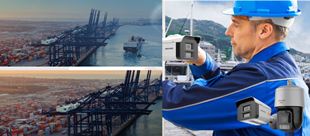19/05/2011
Geovision NVR protects Irish harbour
Dublin, Eire
Following the recommendations of Osmosis, Howth harbour authority chose to install 5MP and 10MP IP cameras at strategic locations. However, the IP camera manufacturer had difficulties providing software to manage such a big quantity of high resolution IP security cameras. A standalone NVR, with limited features, could only support 1 - 3 units of 5MP IP cameras and most could not even support 10MP cameras. Osmosis believed PC-based Geovision NVR was the only solution for this project. Each Geovision NVR system could support nine 5MP cameras and one 10MP camera, so only 2 NVR systems were required for this installation.
Each IP security camera connection on the NVR system uses up memory. Cameras with higher resolutions require higher memory usage. 32-bit Windows operating systems can only use up to 2GB of RAM. Geovision NVR can be installed on 64-bit Windows operating system, which means Windows can use up to 4GB of RAM. This significantly increases the number of high megapixel security cameras that can be connected to a Geovision NVR system. Furthermore, Geovision NVR supports state-of-the-art compression method, H.264 codec, to record the video streams from the cameras. Compared to MPEG4 and MJPEG compression, H.264 codec saves 20 ~ 70% of hard drive space and lowers internet bandwidth requirement for remote applications.
Phase 1 of the Howth harbour project is now complete. So far, Osmosis has installed 10 IP security cameras at strategic points around the harbour and has connected the cameras to a Geovision NVR system. The harbour authority is amazed at how 10 MP cameras can capture so much of Howth harbour and asked Osmosis to begin phase 2 of the installation immediately.
















